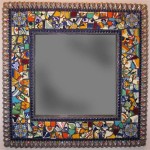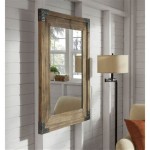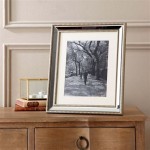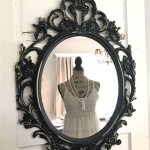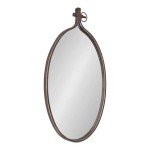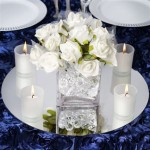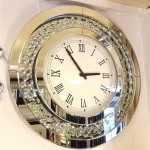How To Hang a Mirror Leaning Forward
Leaning a large mirror against a wall is a popular design choice, creating a casual, yet stylish aesthetic. However, ensuring the mirror's stability is crucial for safety. This article provides a comprehensive guide on how to safely and effectively lean a mirror against the wall.
Assessing the Mirror and Wall
Before beginning, careful assessment of both the mirror and the intended wall is essential. This ensures the chosen location is suitable and the appropriate hanging method is selected.
Key Points:
- Mirror Weight: Heavier mirrors require more robust securing methods.
- Mirror Frame: The frame material and construction impact stability.
- Wall Material: Different wall materials (drywall, plaster, brick) necessitate different hanging approaches.
- Wall Studs: Locating wall studs provides the most secure anchoring points, especially for heavier mirrors.
- Floor Surface: The floor surface (carpet, wood, tile) influences the mirror's angle and stability.
Preparing the Wall
Proper wall preparation is essential for a secure and aesthetically pleasing installation. This may involve patching holes, cleaning the surface, or adding protective elements.
Key Points:
- Clean the Wall: A clean surface ensures optimal adhesion for any securing materials.
- Repair any Damage: Fill any holes or cracks in the wall before proceeding.
- Wall Protectors: Consider using wall protectors where the mirror frame contacts the wall to prevent scuffs or marks.
Securing the Mirror: Non-Permanent Methods
Several non-permanent methods offer flexibility for repositioning the mirror. These are generally suitable for lighter mirrors and less permanent installations.
Key Points:
- Leaning Brackets: Specifically designed leaning brackets attach to the wall and provide a secure cradle for the mirror.
- Non-Slip Pads: Placing non-slip pads beneath the mirror base enhances stability and prevents sliding.
- Adjustable Feet: Some mirrors have adjustable feet that can be used to level the mirror and improve stability.
- Rubber Stops: Small rubber stops adhered to the back of the mirror's frame can help prevent slipping and protect the wall.
Securing the Mirror: More Permanent Methods
For heavier mirrors or situations requiring enhanced security, more permanent fixing solutions are recommended. These methods offer greater stability and peace of mind.
Key Points:
- Wall Anchors and Wire: Utilizing wall anchors and picture wire provides a robust and secure hanging solution, especially for heavier mirrors. Secure the wire to D-rings or other strong attachment points on the back of the mirror frame.
- French Cleats: These interlocking wooden brackets provide a strong and stable mounting solution, distributing the weight evenly along the wall.
- Mirror Mounting Clips: Specialized mirror mounting clips are designed to grip the edges of the mirror and secure it to the wall. Ensure the clips are appropriately sized and weight-rated for the specific mirror.
Achieving the Desired Angle
The angle at which the mirror leans impacts both aesthetics and stability. Careful adjustment is necessary to achieve the desired look while maintaining safety.
Key Points:
- Gradual Adjustment: Lean the mirror slowly and incrementally, checking stability at each stage.
- Shims: If necessary, use thin shims to fine-tune the angle and ensure even contact with the wall and floor.
- The "Finger Test": Check for stability by gently pressing against the top edge of the mirror. There should be minimal movement.
Safety Considerations
Safety should be the paramount concern throughout the entire process. Taking appropriate precautions mitigates potential risks.
Key Points:
- Assistance: Enlist assistance when handling large or heavy mirrors.
- Protective Gear: Wear gloves and eye protection when working with tools or adhesives.
- Child Safety: Ensure the mirror is securely fastened to prevent tipping hazards, especially in homes with children or pets.
- Regular Inspection: Periodically inspect the mirror and its securing method to ensure ongoing stability.
Choosing the Right Method
Selecting the appropriate hanging method depends on a variety of factors. Carefully consider the specifics of the mirror and the intended location.
Key Points:
- Mirror Weight and Size: Heavier and larger mirrors require more robust methods.
- Wall Type: Consider the wall material and its ability to support the mirror's weight.
- Desired Aesthetics: Some methods are more visually discreet than others.
- Permanence: Choose a method that aligns with the intended duration of the installation.

Why Frames Tilt Forward The 100 Billionth Person

Why Frames Tilt Forward The 100 Billionth Person

Tilted Mirror

Why Frames Tilt Forward The 100 Billionth Person

Why Frames Tilt Forward The 100 Billionth Person

Why Frames Tilt Forward The 100 Billionth Person

How To Secure A Leaning Mirror The Wall Diy Playbook

Why Frames Tilt Forward The 100 Billionth Person

How To Secure A Leaning Mirror Wall Hunker

Feng Shui Mirror Tips Homes Direct 365 Blog


